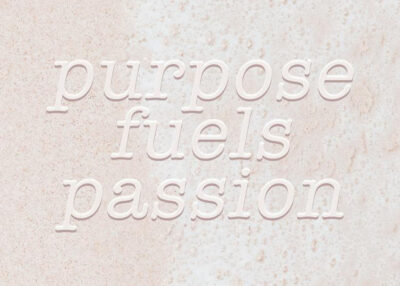Stirring Up Sponsors: The Secret Recipe for Food Festival Partnerships
A well-curated food festival can do more than simply tantalize taste buds—it can also become a vibrant platform to forge valuable community connections. To bring such a large-scale (and often costly) endeavor to life, many organizers turn to sponsors for support, whether it’s for venue rental, logistics, or marketing initiatives. But the art of wooing and retaining the right sponsors requires more than a basic pitch.
Below, you’ll find guidance on identifying potential partners, crafting offers they find irresistible, and building a festival experience that benefits everyone involved—especially your hungry attendees.

Setting the Stage: Why Sponsors Matter
Securing sponsors isn’t just about offsetting costs; it’s a strategic move that amplifies your festival’s reach and reputation. Sponsors often bring established audiences, brand credibility, and marketing channels that shine fresh light on your culinary celebration. A well-aligned sponsor relationship can breathe life into your event—think new promotional opportunities, cutting-edge event technology demonstrations, or even unique chef collaborations.
But before you start sending out emails or cold-calling prospective brands, lay the groundwork:
- Clarify Your Brand Identity: What’s your festival’s vibe? A farm-to-table celebration in a countryside orchard? A gourmet street food fair downtown? Paint a vivid picture, so sponsors see exactly what they’ll be associating their brand with.
- Identify Core Values: Sponsors appreciate authenticity. If your festival emphasizes sustainability and local producers, for instance, highlight this when approaching eco-conscious companies.
Step 1: Pinpoint Your Ideal Sponsorship Synergy
When scouting potential sponsors, keep one question top-of-mind: Does this partnership add genuine value to the attendee experience? If your festival focuses on artisanal foods, approaching a local craft brewery or organic farm could be a natural fit. Corporate technology giants might be interested in sponsoring high-end culinary demos or interactive lounges that feature their latest gadgets.
To ensure synergy:
- Draft a list of 10–15 brands that share your festival’s ethos.
- Research any sponsorships they’ve done in the past—understanding their preferred event types helps tailor your pitch.
- Consider reaching out to local businesses first; they often appreciate the chance to connect with community-driven audiences.
Step 2: Craft Compelling Sponsor Packages
Think of your sponsorship proposal as an invitation into a partnership—not a cold, one-sided transaction. The more appealing you make this partnership, the more likely a prospective sponsor will jump on board.
Some possibilities to highlight:
- Onsite Branding: Prominent logo placement at entry gates, banner space in high-foot-traffic areas, or branded sampling stations.
- VIP Experiences: Offer an exclusive lounge for your sponsor’s top clients or employees—a comfortable place to mingle, sample specialized bites, or even enjoy a private chef presentation.
- Digital Exposure: Feature sponsors across social media shout-outs, email newsletters, and ticket registration confirmations—every digital touchpoint can reinforce brand presence.
- Educational Tie-Ins: If sustainability is at your festival’s heart, encourage sponsors to co-host panel discussions or run interactive workshops that underline both your festival’s and the sponsor’s mission.
Remember: Get as granular as needed. Building different tiers (e.g., “Presenting Sponsor,” “Gold Partner,” “Community Ally”) can offer flexibility and help sponsors choose the level of commitment that suits them best.

Step 3: Polish Your Pitch and Perfect Your Approach
Your approach is often the make-or-break moment. Whether it’s a brief email introduction or a formal proposal, clarity and genuine enthusiasm can differentiate you from the many inquiries sponsors receive daily.
Consider these pointers:
- Be Concise: Sponsors aren’t likely to read lengthy documents. Present your festival highlights—like expected attendance, target demographic, and media reach—in a succinct, visually appealing manner.
- Show Them the ROI: In addition to intangible benefits (community goodwill, potential press coverage), quantify results wherever possible: “Last year’s event attracted 5,000 attendees with a social media reach of 50,000 impressions.”
- Strike the Right Tone: Let your natural passion for the event shine through, but remain professional and open to dialogue. Make it clear you’re willing to collaborate on creative sponsor activations—rather than dictating a strict sponsor playbook.
Step 4: Keep Sponsors in the Loop
Once you’ve secured your sponsors, treat them like valued partners rather than transaction-based vendors. This translates to frequent, meaningful updates and opportunities for feedback.
Ways to nurture the relationship:
- Regular Check-Ins: Share festival timelines, marketing campaign details, and any adjustments in event planning ideas. A short monthly call or email can keep communication flowing smoothly.
- Collaboration on Marketing Assets: If you’re unveiling a new festival logo or designing social media banners, invite key sponsors to preview and offer input.
- Invite Sponsor Creativity: If a sponsor’s brand is known for innovation, let them propose unique engagement zones—maybe an “interactive taste lab” or a “technology-powered dining experience.” That sense of agency often bolsters their commitment and excitement.
Step 5: Deliver a Lasting Impression—and Measure Results
A successful partnership doesn’t end with the festival’s closing act; the real value emerges when you analyze results, share thank-you notes, and highlight sponsor successes.
To wrap up properly:
- Present a Post-Event Report: Compile attendance numbers, social media engagement stats, photos of sponsor branding in action, and any press mentions. Providing concrete data affirms the sponsor’s investment.
-
Celebrate Publicly: Offer public gratitude. Tag them in event recap posts, mention them in your post-festival press release, and invite them to share your content with their networks.
Gather Testimonials: Ask sponsors for a quick quote on their festival experience. These testimonials can boost credibility in future sponsorship pitches.
The Big Takeaway
Sponsorships for your food festival should be about more than funding alone—they’re partnerships where both parties can showcase their strengths and resonate with a shared community. By aligning with brands whose vision mirrors your own, crafting enticing sponsorship packages, and maintaining clear communication, you’ll forge bonds that carry your festival’s impact well beyond event day.
So set the table for potential sponsors. Serve them a taste of your festival’s atmosphere, goals, and creative flair. And watch as these collaborations not only secure financial backing but also help your celebration flourish, leaving attendees—and your sponsors—hungry for more. Bon appétit to building lasting, fruitful partnerships!






